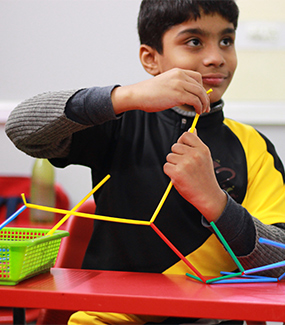
DIY: Multisensory Rooms
As we have DIY FACE PACKS ..WHY CAN’T WE HAVE DIY MULTISENSORY ROOMS. Yes you heard it right we can create child DIY MULTISENSORY ROOMS
The room incorporates all of the senses and multisensory rooms incorporate all the senses into one whole. It can help reduce anxiety and agitation with calming music, scents, and more. The lights and tactile engagement can also engage children and hold their attention by stimulating their senses.
The child will understand different stimuli and try to incorporate the desired response expected.
Think about what you already have at home that can be added to space.it includes what you easily have at your doorstep to do wonders for your child. Most rooms limit light, do you have curtains that could be used to cover the window? The same curtains could be used to create a hidden nook in a corner. Christmas lights, especially flashing options, can be used as visual stimuli. Once you know what you have, you can start deciding what you should buy.
Bouncing ball
It can be of any size depending, but personally I would prefer to use 3 different sizes: one may be the size of your child other two can be of larger than your child size and other can be layered according to your wish size it could be peanut ball, pogo ball, or normal size ball.
Students always start by bouncing on a ball in time to a metronome. It’s very important to provide consistency, and starting (and ending) each session on a bouncing ball allows for ease of transition and provides predictability. Next, students either do a set rotation among the stations or make their own choices.
You can tell a child to roll the ball with a specific target.
 peanut ball
peanut ball
 pogo ball
pogo ball
 gym ball
gym ball
Swing
A swing can make a great centerpiece in a sensory room for a child on the autism spectrum. For many children, the swing can be a great reinforcement. Make sure to use it before asking your occupational therapist about the swing time or etc!
As some children may require There are different types of swings and while they all provide vestibular stimulation — a sense of movement or gravity — they serve different purposes. A lycra swing provides deep pressure or a “cocoon” feel. A platform swing lays low to the ground and provides bigger movement sensations. If mounted to a swivel hook, a child can lay on their stomach and spin in a swing using their arms. A net swing provides linear movement, much like a typical swing. Depending upon your child need by consulting your therapist you can hang swings and do many activities
The swing should be kept in a detachable way so that parents can do any activity too at the place of swing.
Lightning ( light bulbs )
You don’t need high-tech lighting equipment to do the trick. You can add a relaxing glow to your sensory space by using some holiday lights, net lights, string lights, battery-powered candles, glow candles, bulb fancy lights, led bulbs Lighting is such a powerful thing

It influences us in subtle ways and can change the way we feel. For example, fluorescent overhead lights that emit a cool tone can make us feel uncomfortable. Warm, soft lighting can make us feel relaxed. Don’t be afraid to use lighting to create a relaxing atmosphere and comfy ambiance.
Either you can hang the lights or put the lambs under the proper guidance of a therapist
- Line the inside of your storage lid with the tissue paper and use the tape to secure it in place.
- Spread the lights evenly around the inside of the box and make sure the end of the cord hangs out so that you can plug it into an outlet. You should be able to close the box all the way even though the cord dangles out of the side of the box.

- Place your selected items on top of the light table and let your child enjoy playing! Easy Peasy!
Trampoline
You can use a trampoline for jumping or overcome the hyperactivity level of a child. The trampoline should be placed at the corner of the room to do multiple activities.
Music
You don’t need a state-of-the-art sound system. A simple stereo or inexpensive mini sound dock to play music over is a wonderful option. Or, simply play some songs on your phone to have as background noise in your sensory space. Music can change the way we feel.you can use Bluetooth speaker or Alexa to play a piece of pleasant music in the dark centered room with led light effects
Bean bags
You can use a bean bag or deep pressure or toss a bean bag activity. The bean bags can be placed anywhere in a room.you can make your child walk on a bean bag with hand-assisted for balance and coordination. Bean bags can be ordered from offline or online.

Ball pool

You can either buy a big swimming pool made up of plastic or a big cartoon. Plastic balls can be placed inside a pool .this can help for calming effects
Fine motor skills
You can use fine motor activities mentioned in my other blogs you can check!
Textured walls or Textured mats
You can either make your own textured wall including different textures hang on the wall or order online. It may involve pebbles, ribbons, coarse mat texture.

You can buy or use different texture mat aether place it on a big yoga mat, Make your child walk on the different mats!


Curtains and blinds
It has been suggested that it’s best to avoid using slatted blinds, particularly vertical ones, as these can be distracting. Curtains may be a better option, with blackout curtains helping someone who is particularly sensitive to light. If someone has a tendency to pull on curtain rails, curtains can be held up with Velcro.
The plastic stick-on covering/ blinds can also be placed on windows, giving privacy while letting some light in.

fiber optics/bubble tubes
They can be placed on the dark side of the room curtains or doors can be placed . This may improve eye contact, with correct behavior intervention fiber optics,or help to reduce the hyperactivity.

Sensory basket
containing a selection of sensory items that can travel around with an autistic person.
This could include stress balls, a whistle with the pea removed for hard blowing, unbreakable mirror - for the person to be able to see their emotions, scented lotions

Colour and patterns of the room
It is generally accepted that low arousal colors such as cream (not yellow or white) should be used for walls and patterned wallpaper should be avoided. Soft furnishings should also be kept fairly plain. Single-colour, painted walls can also eliminate the possibility of wallpaper being removed. Patterned floors can be confusing to walk across and may increase anxiety or cause people to become fixated.
Dupatta flow
You can use pieces of clothes or a bed sheet to tie it with a rod to tell the child to stretch.
The sensory room can be customized according to the need or demands of a child. One thing to be kept in mind that the child may or may not like some of the activity better to consult your therapist about what to be added into the room because sensory rooms will act as an adjunct to the therapy. The room can be altered with many new activities in the sensory room depending upon the need of your child.
The sensory rooms can be seen in the number of variety :

















